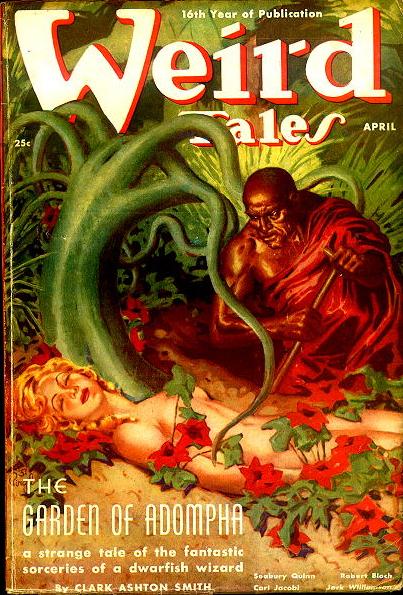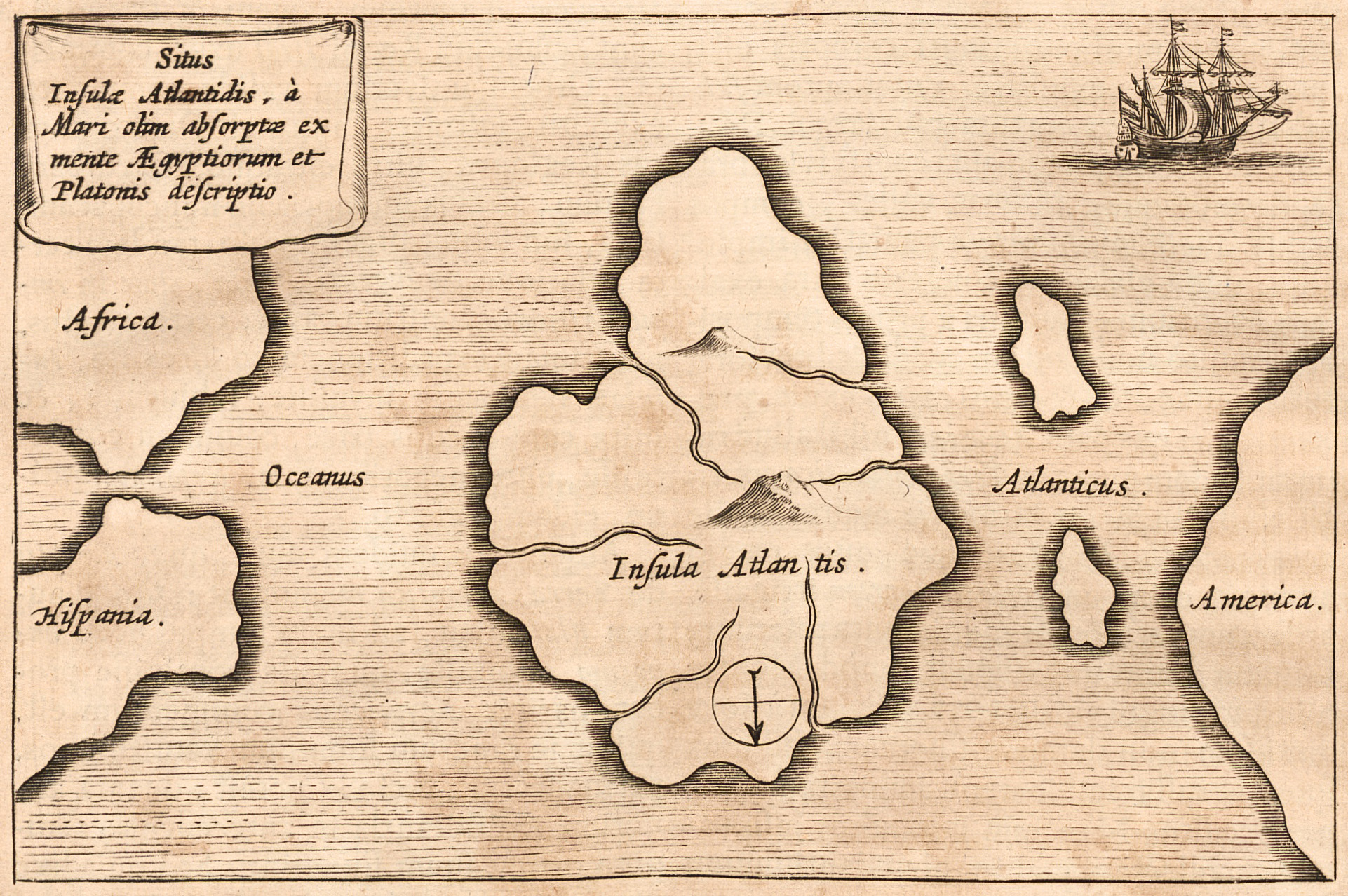|
Poseidonis
Poseidonis is the fictional last remnant of the lost continent of Atlantis, mentioned by Algernon Blackwood in his short story "Sand" (published in 1912) in his collection ''Four Weird Tales'' and also detailed in a series of short stories by Clark Ashton Smith. Smith based Poseidonis on Theosophical scriptures about AtlantisWilliam Scott Elliot, ''The Story of Atlantis'', Theosophical Publishing Society, 1896, p.18 (such as ''Secret Doctrine'' by Helena Blavatsky), and his concept of "the last isle of foundering Atlantis" is echoed by the isle of Númenor in J. R. R. Tolkien's legendarium. Stories in Smith's Poseidonis cycle *"The Muse of Atlantis" (prose poem) *"The Last Incantation" *"The Death of Malygris" *"Tolometh" (poem) *"The Double Shadow" *"A Voyage to Sfanomoë" *"A Vintage from Atlantis" *"Atlantis: a poem" (poem) Other writers In the Pusadian series of short stories by L. Sprague de Camp, "Poseidonis" refers to the fictional lost island continent of Pusad, ... [...More Info...] [...Related Items...] OR: [Wikipedia] [Google] [Baidu] |
Clark Ashton Smith Bibliography
The following is a list of works by Clark Ashton Smith. __TOC__ Short fiction Prose poems Novel * ''The Black Diamonds'', written in 1907, published in 2002 Plays * ''The Dead will Cuckold You'': A Drama in Six Acts (in verse). Written in 1951. First published in 1989* ''The Fugitives'': a fragment. Written on September 17, 1922. Published in 1989* ''Venus And The Priest'': a fragment. Published in 1989 Lyrics * ''The Dream Bridge'': Music by Henry Cowell, words by Clark Ashton Smith. Written c. 1920* ''Impression'': Music by Joseph W. Grant, words by Clark Ashton Smith* ''White Death'': Music by Henry Cowell, words by Clark Ashton Smith. Written in Sept 1915 Poetry Poems (including translations)Titles and dates based on the bibliography established bwww.eldritchdark.com by Clark Ashton Smith: *Abandoned Plum-Orchard (1958) *Abel et Caïn (CXLIV. Abel et Caïn) *The Absence of the Muse (Oct 1921) *The Abyss Triumphant (3 Aug 1912) *Adjuration (1976) *Adventure (14 Feb ... [...More Info...] [...Related Items...] OR: [Wikipedia] [Google] [Baidu] |
Clark Ashton Smith
Clark Ashton Smith (January 13, 1893 – August 14, 1961) was an American writer and artist. He achieved early local recognition, largely through the enthusiasm of George Sterling, for traditional verse in the vein of Swinburne. As a poet, Smith is grouped with the West Coast Romantics alongside Joaquin Miller, Sterling, and Nora May French and remembered as "The Last of the Great Romantics" and "The Bard of Auburn". Smith's work was praised by his contemporaries. H. P. Lovecraft stated that "in sheer daemonic strangeness and fertility of conception, Clark Ashton Smith is perhaps unexcelled", and Ray Bradbury said that Smith "filled my mind with incredible worlds, impossibly beautiful cities, and still more fantastic creatures". Smith was one of "the big three of ''Weird Tales'', with Robert E. Howard and H. P. Lovecraft", but some readers objected to his morbidness and violation of pulp traditions. The fantasy critic L. Sprague de Camp said of him that "nobody since Poe has s ... [...More Info...] [...Related Items...] OR: [Wikipedia] [Google] [Baidu] |
Pusadian Series
The Pusadian series is a sequence of fantasy stories by L. Sprague de Camp, begun in the early 1950s and written under the influence of Robert E. Howard's Conan stories. The series, also known as the Poseidonis series, prefigured the numerous sword & sorcery settings of the 1960s and 1970s. The setting Just as de Camp attempted to do for the Barsoom novels of Edgar Rice Burroughs with his "Krishna" stories, the Pusadian stories represent both a tribute to Howard's prehistoric " Hyborian Age" and an attempt to "get it right", reconstructing his model's concept logically, without what he regarded as Howard's anthropological and geological absurdities. Unlike Howard, de Camp brought a thorough knowledge of ancient history and geography to his project, along with a wealth of research on prior literary treatments of speculative prehistoric civilizations, as reflected in his definitive study '' Lost Continents'' (1954). In constructing his "Pusadian Age", de Camp took Plato's accoun ... [...More Info...] [...Related Items...] OR: [Wikipedia] [Google] [Baidu] |
Hyperborean Cycle
The Hyperborean cycle is a series of short stories by Clark Ashton Smith that take place in the fictional prehistoric setting of Hyperborea. Smith's cycle takes cues from his friends, H. P. Lovecraft and Robert E. Howard and their works. Lovecraft wrote to Smith in a letter dated 3 December 1929: "I must not delay in expressing my well-nigh delirious delight at '' The Tale of Satampra Zeiros'' mith's short story.. at an atmosphere! I can see & feel & smell the jungle around immemorial Commoriom, which I am sure must lie buried today in glacial ice near Olathoe, in the Land of Lomar!". Soon afterward, Lovecraft included Smith's Tsathoggua (which originally appeared in "The Tale of Satampra Zeiros") in the story "The Mound", ghostwritten for Zealia Bishop in December 1929. Lovecraft also mentioned Tsathoggua in "The Whisperer in Darkness", which he began on February 24, 1930, and in "At the Mountains of Madness" a year later, along with the Hyperborean cities of Commoriom and U ... [...More Info...] [...Related Items...] OR: [Wikipedia] [Google] [Baidu] |
Averoigne
Averoigne is a fictional counterpart of a provinces of France, historical province in France, detailed in a series of short stories by the American writer Clark Ashton Smith. Smith may have based Averoigne on the actual province of Auvergne (province), Auvergne, but its name was probably influenced by the French department of Aveyron, immediately south of Auvergne, due to the similarity in pronunciation. Sixteen of Smith's stories take place in Averoigne. In Smith's fiction, the Southern French province is considered "the most witch-ridden in the entire country." The most well-known citizen is Gaspard du Nord of Vyones, a wizard who translated ''The Book of Eibon'' into Norman French. Fictional history In ancient times, Smith depicts Averoigne as having been settled by the fictional Gaul, Gallic tribe called the Averones. They established a number of settlements in the region, many of which were fortified when the Roman Empire absorbed the region. When Christianity spread throu ... [...More Info...] [...Related Items...] OR: [Wikipedia] [Google] [Baidu] |
Drama Dari Krakatau
''Drama dari Krakatau'' (; ''Drama of Krakatoa'') is a 1929 vernacular Malay novel written by Kwee Tek Hoay. Inspired by Edward Bulwer-Lytton's 1834 novel ''The Last Days of Pompeii'' and the 1883 eruption of Krakatoa, the sixteen-chapter book centres on two families in 1920s Batam that are unknowingly tied together by siblings who were separated in 1883. The brother becomes a political figure, while the sister marries a Baduy priest-king. Ultimately these families are reunited by the wedding of their children, after which the priest sacrifices himself to calm a stirring Krakatoa. First published as a serial in Kwee's magazine ''Panorama'' between 7 April and 22 December 1928, ''Drama dari Krakatau'' was written over a period of two months after the author was asked to prepare a "sensational" story for a film. Before the final instalment had been published, the novel had already been adapted for the stage. Although Kwee was known as a realist and researched the volcano before ... [...More Info...] [...Related Items...] OR: [Wikipedia] [Google] [Baidu] |
Zothique
''Zothique'' is a collection of fantasy short stories by Clark Ashton Smith, edited by Lin Carter. It was first published in paperback by Ballantine Books as the sixteenth volume of its Ballantine Adult Fantasy series in June 1970. It was the first themed collection of Smith's works assembled by Carter for the series. The stories were originally published in various fantasy magazines in the 1930s, notably ''Weird Tales''. Background The book collects one poem and all sixteen tales of the author's Zothique cycle, set on the Earth's last continent in a far distant future, with an introduction, map, and epilogue by Carter. They were originally written and published between 1932 and 1951. Most were written in a tar paper and wood cabin in Auburn, California. All were first published in the magazine ''Weird Tales'' with the exception of " The Voyage of King Euvoran" which first appeared in the 1933 book ''The Double Shadow and Other Fantasies'' and later republished under the title " ... [...More Info...] [...Related Items...] OR: [Wikipedia] [Google] [Baidu] |
Sea Level Rise
Globally, sea levels are rising due to human-caused climate change. Between 1901 and 2018, the globally averaged sea level rose by , or 1–2 mm per year on average.IPCC, 2019Summary for Policymakers InIPCC Special Report on the Ocean and Cryosphere in a Changing Climate .-O. Pörtner, D.C. Roberts, V. Masson-Delmotte, P. Zhai, M. Tignor, E. Poloczanska, K. Mintenbeck, A. Alegría, M. Nicolai, A. Okem, J. Petzold, B. Rama, N.M. Weyer (eds.) Cambridge University Press, Cambridge, UK and New York, NY, USA. https://doi.org/10.1017/9781009157964.001. This rate is accelerating, with sea levels now rising by 3.7 mm per year. Climate scientists expect further acceleration during the 21st century. Climate change heats (and therefore expands) the ocean and melts land-based ice sheets and glaciers. Between 1993 and 2018, the thermal expansion of water contributed 42% to sea level rise; melting of temperate glaciers, 21%; Greenland, 15%; and Antarctica, 8%. Over the next 20 ... [...More Info...] [...Related Items...] OR: [Wikipedia] [Google] [Baidu] |
Malay Archipelago
The Malay Archipelago (Indonesian/ Malay: , tgl, Kapuluang Malay) is the archipelago between mainland Indochina and Australia. It has also been called the " Malay world," " Nusantara", "East Indies", Indo-Australian Archipelago, Spices Archipelago and other names over time. The name was taken from the 19th-century European concept of a Malay race, later based on the distribution of Austronesian languages. Situated between the Indian and Pacific Oceans, the archipelago of over 25,000 islands and islets is the largest archipelago by area and fourth by number of islands in the world. It includes Brunei, East Timor, Indonesia, Malaysia (East Malaysia), Papua New Guinea, the Philippines and Singapore.''Encyclopædia Britannica''. 2006. Chicago: Encyclopædia Britannica, Inc. The term is largely synonymous with Maritime Southeast Asia. [...More Info...] [...Related Items...] OR: [Wikipedia] [Google] [Baidu] |
Tolkien's Legendarium
Tolkien's legendarium is the body of J. R. R. Tolkien's mythopoeic writing, unpublished in his lifetime, that forms the background to his ''The Lord of the Rings'', and which his son Christopher summarized in his compilation of '' The Silmarillion'' and documented in his 12-volume series '' The History of Middle-earth''. The legendarium's origins reach back to 1914, when Tolkien began writing poems and story sketches, drawing maps, and inventing languages and names as a private project to create a unique English mythology. The earliest story drafts (of '' The Book of Lost Tales'') are from 1916; he revised and rewrote these for most of his adult life. ''The Hobbit'' (1937), Tolkien's first published novel, was not originally part of the larger mythology but became linked to it. Both ''The Hobbit'' and ''The Lord of the Rings'' (1954 and 1955) took place in the Third Age of Middle-earth, while virtually all of his earlier writing had been set in the first two ages of the ... [...More Info...] [...Related Items...] OR: [Wikipedia] [Google] [Baidu] |
Atlantis
Atlantis ( grc, Ἀτλαντὶς νῆσος, , island of Atlas) is a fictional island mentioned in an allegory on the hubris of nations in Plato's works ''Timaeus'' and ''Critias'', wherein it represents the antagonist naval power that besieges "Ancient Athens", the pseudo-historic embodiment of Plato's ideal state in '' The Republic''. In the story, Athens repels the Atlantean attack unlike any other nation of the known world, supposedly bearing witness to the superiority of Plato's concept of a state. The story concludes with Atlantis falling out of favor with the deities and submerging into the Atlantic Ocean. Despite its minor importance in Plato's work, the Atlantis story has had a considerable impact on literature. The allegorical aspect of Atlantis was taken up in utopian works of several Renaissance writers, such as Francis Bacon's ''New Atlantis'' and Thomas More's ''Utopia''. On the other hand, nineteenth-century amateur scholars misinterpreted Plato's narrative ... [...More Info...] [...Related Items...] OR: [Wikipedia] [Google] [Baidu] |





.jpg)
